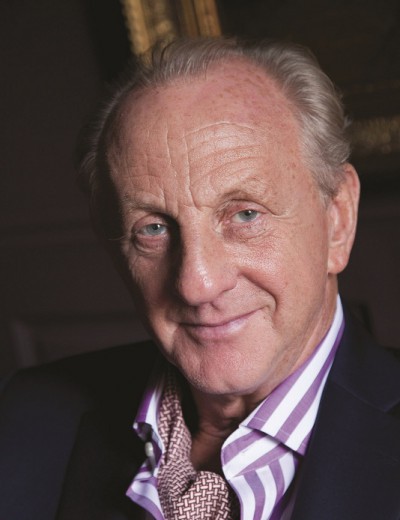
Paul Costelloe
About
Paul Costelloe was born in Ireland in 1945 of Irish and American parents. He studied fashion design at the Ecole de la Chambre Syndicale, in Paris from 1967 to 1969.
He started his career as assistant to Jacques Esterel from 1969-71. After that he did freelance design work in Milan and London, as well as New York from 1972-1979 when he worked with Anne Fogarty and others.
He started his own company in 1979 and has built up a loyal client base who depend on his classic tailoring, sophisticated separates and knits. These are fashioned from the finest quality linens, cottons and tweeds, and his collections move into luxurious elegance for stylish evening clothes.
The Look
Renowned for his use of natural fibers and fabrics, the best-quality wools and silks, and a particular bias toward traditional Irish linen, Costelloe clothes are one of the most subtle, understated, yet beautifully designed and manufactured collections available today. Acknowledging his love of Giorgio Armani's tailoring and the influence of Italian taste and style on the cut and flair of his collections, Costelloe always manages to fit an inspirational visit to Italy into his schedule before commencing the design of a new collection. In general, three collections are produced each season under the Costelloe label, including the main line range (elegant, formal, and quietly sexy), the diffusion range called Dressage (country casual, timeless, and more suited to weekend dressing), and a third collection, the Studio Line, which was launched in 1992 and features what has been decribed as "investment tailoring," in neoclassic colors. The clothes are aimed at today's modern career woman who has a distinctive, quiet taste and understated sophistication. Costelloe's spring-summer 1992 collection was an example of the designer at his peak. A series of sharp, sugary suits in pink, yellow, and green wool opened the collection. Teamed with short, flirty, polka dot skirts or blouses and oversize double crown hats, they were perfect for summer events like Ascot or garden parties. Ladylike check-cotton suits followed. Teamed with straw boaters and decorated with Costelloe's distinctive brass buttons, the look was demure and pristine, offset by soft kid gloves and gold jewelry. Like Armani, Costelloe loves beige, and this color, in various hues, features strongly in nearly all of his collections. The controversy did not impede Costelloe's success as a designer. He continued to find acclaim using natural materials such as lambswool, tweeds, and linens, and featuring low-key styling which melded both with his personality and with Irish tradition, as noted by Tim Brannigan in the Irish News. Brannigan explained that Costelloe considered clothing a frame and woman the picture within it; the frame should never take away from the picture. Although Costelloe sometimes introduces surprises into his collections, such as combining checks with floral prints in 1997, his designs remain elegant and unaffected by short-lived trends.